Days 36, 37, 38, and 39: Pâtes and pans.
A flurry of activity took us through the week, the focus of which was crusts. We learned the classic pâte brisée (pot bree-zay), which essentially translates to “broken dough,” the sweetened pâte sucrée (soo-cray), in both the plain and chocolate versions, pasta frolla, a more mildly sweet Italian dough, galette dough, which I’ll explain later, and a gorgeous flaky pie dough made using sour cream.
The first dough, pâte brisée, is made by rubbing pieces of fat (butter, in our case) into flour with a nick of salt in it, and adding water until a dough is formed. The butter remains in those “pea-sized” chunks we’ve all read about in so many cookbooks (let me tell you, it’s an average you’re going for here, folks; don’t waste your life trying to get them all pea sized – it would be beyond annoying and the crust wouldn’t come out as nicely if they were all the same size). The purpose of this is that when they’re incorporated into the dough at that size, the butter’s moisture, which evaporates during baking, steams the layers of dough apart, resulting in a flaky texture. A good brisée, in my humble opinion, should end up exactly halfway between a shortbread cookie and a true American pie crust when it comes to being flaky. This crust is typically used for tarts. There’s no sugar in it, so it’s superb for savory tarts, but filling it with a mildly sweet pastry cream and a glazed fresh fruit topping allows it to bend the other way as well; this is what we did with ours. We were to make one large tart and two small ones. I went behind Chef’s back and made one large and seven small. (What can I say; I really like tarts, especially charming little ones.) We had a wide variety of fresh fruit available to us, which, being that it’s February, mostly tasted like cardboard from a Kool-Aid shipping box (remind me sometime to go on a rant about how Americans really aggravate me sometimes by demanding year-round availability of fruit and then convincing themselves that it tastes good when it’s out of season, or, for a less bitingly sarcastic version, visit my paper), but we carried on anyway. Eating quality of the fruit aside, the displays of color which resulted were about as fantastic as a flock of agitated macaws.
Pâte sucrée differs from brisée in that the fat is rubbed in much more thoroughly, so that the mixture, before adding water, resembles that stuff certain large food corporations sell in green cans and audaciously call “parmesan” “cheese.” Water is then mixed in, and the dough, as you might expect, has a notably smoother texture, which then bakes down to a shorter – more crumbly – texture than its flaky cousin. Pâte sucrée is used for sweet tarts, and our choice was the classic apricot cognac tart. What a marvel this confection is. We were fortunate to have high-quality apricots which were canned ripe. We rolled out a large rectangle of dough and used it to line an entire half-sheet pan (13 by 18 inches). We then filled it with lightly cognac-flavored pastry cream, topped it with apricot halves (face down), baked it, and then glazed it with melted apricot jelly which also had an insinuation of cognac. This is a surreal treat, as long as you use good apricots and good cognac. A very judicious sprinkling of crumbled toasted almonds elevates the taste and texture to a level that I, in my limited vocabulary, can only describe as transporting.
We used our chocolate sucrée to make tartlet shells which we filled with ganache (a mixture of chocolate and cream (basically)) and topped with hazelnuts. I never imagined a time in my life would come when I strongly preferred an apricot pastry to a chocolate one, but, against all odds, it’s happened. I don’t know if it was the recipe, the preparation, or something as simple as a lack of cognac, but our spiffy little chocolate tartlets, which make you melt just thinking about them, were pretty dull. I’ll have to tweak this one and get back to you. They were cute though.
The less edgy pasta frolla was another dough we rolled out into a half-sheet pan, but the filling here was vastly different than the apricot tart, and satisfying on a whole other level. We managed to lay down a solid inch-thick layer of a most decadent mixture: smooth ricotta, mozzarella, and Romano cheeses, shredded prosciutto, and diced sweet sausage. Just for looks (ok, and taste), we covered the whole shebang with a lattice of more pasta frolla. The slight sweetness of the crust perfectly offset the salt of the pigstuffs and the heat of the generously cracked black pepper. (Isn’t that the kind of qualification you look for in a perfect food?) This glorious invention bears the humble name pizza rustica. Oh, to be an Italian peasant.
Now, to the galette. These rustic pastries are made using a dough that is prepared in the same technique as a pâte sucrée, but which isn’t sweetened. The dough is rolled out into circles, filling is placed on top, and the edges are folded over it but not completely into the center, so the filling in the center is left exposed. They’re baked directly on the deck of the oven, which develops a crisp bottom crust, heightening appeal in terms of appearance, texture, and flavor, as well as adding stability. We made two varieties, both using roasted fruits: plum-ginger, and pear-fig. The roasted pear and fig filling was especially terrific – not only did I receive my first badge of honor (a.k.a. large second-degree burn) pulling it from the oven, but its flavor was downright ethereal (this usually happens when you add rum, vanilla, sugar, lemon zest, and a pinch of salt to something and bake it). You should really consider making a galette. They’re easier than pies; you only have to roll one crust, you don’t have to fuss with a pan, and if it looks uneven or boils over or cracks somewhere, it only adds to the inherent rustic appeal – a margin any baker can appreciate.
Finally, we come to the pie. This iconic American pastry, which so many things are as-easy-as, has been the source of a number of frustrating kitchen ventures for me, as I know it has for many others. (Even if they didn’t know it, it’s happened to them; let’s admit it: we’ve all eaten some pretty awful pie at one pot-luck or another.) The recipe we used for the dough, as mentioned, had a contingent of sour cream, which is beneficial in a number of ways. First, the acidity in the sour cream inhibits the development of gluten, so there’s less worry about overmixing, a common issue with pie dough. Second, it gives the dough a rich, smooth flavor, just as you might expect it would. Third… well, who needs a third when you have those two? This dough rolled out very easily and smoothly, which is about seventy-five per cent of the real battle with pie. I decided to continue with the theme “iconic” and filled it with sour cherries and topped it with a lattice crust. It was flawless. (I blame the recipe.)
The common denominator here is mixing. Crusts are sometimes flaky, sometimes short, and sometimes somewhere in between. They shouldn’t ever be chewy or tough, though, which are the results of overmixing. When you consider that some of the greatest pastry doughs in the world are some of the most quickly mixed and least fussed-over, you start to understand why things could ever be called easy as pie. Want to make your pie as easily as… well… pie? Simple: introduce all your ingredients to one another, allow them to become acquainted, and then do what any gracious host or hostess would.
Walk away!
Tuesday, February 20, 2007
Subscribe to:
Post Comments (Atom)



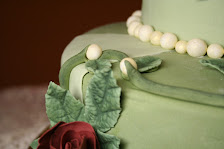

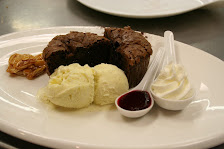
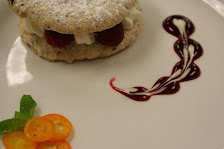
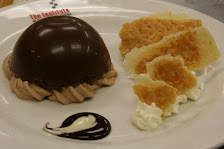
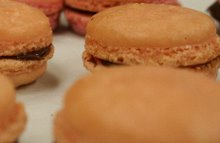
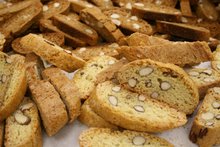
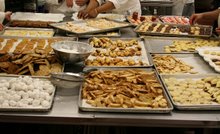



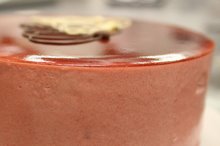



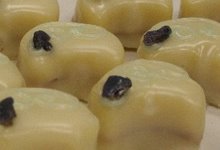
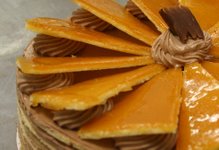



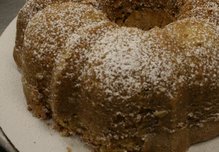
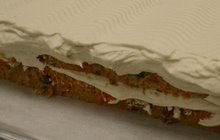


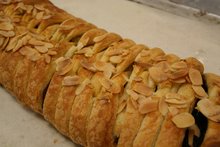






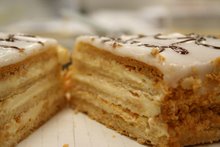
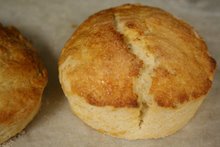


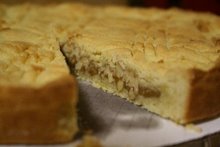












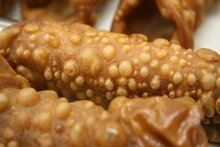


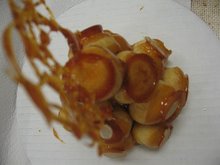
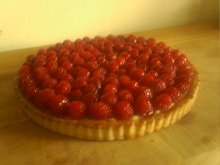


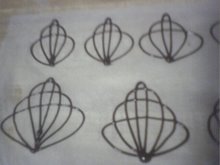


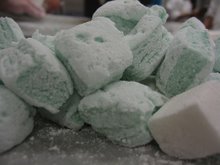

No comments:
Post a Comment